On the morning of December 1st, the minimum temperature line of 0°C reached southern Guizhou, southern Hunan, northern Jiangxi, northwestern Zhejiang, and southern Jiangsu, with temperatures dropping below 0°C for the first time in many areas. Such low temperatures can have a significant impact on the safe overwintering of Tea plants, so it is urgent to take precautions against extreme weather conditions such as cold snaps and snow to mitigate frost damage to tea plants.
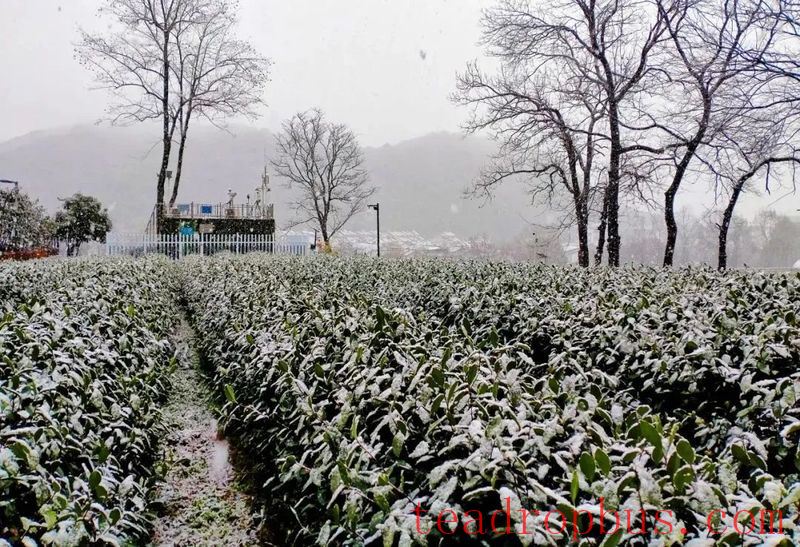
Types of Frost Damage in Tea Plants
Frost damage in tea plants can be categorized into four types: freezing, dry frost, snow frost, and hoarfrost. Based on the growth stage of the tea plant, frost damage can also be divided into winter frost and spring frost, with the latter primarily being hoarfrost and having the greatest impact on the yield and quality of the following year's Spring Tea.
1. Freezing
Low temperatures cause free water between cells to freeze, leading to cell shrinkage and the gradual seepage of water from inside the cells. As ice crystals grow larger between the cells, the concentration within the cells increases, causing the protoplasm to dehydrate, deteriorate, and solidify, ultimately leading to cell death. If there is continuous rain after snow during the overwintering period of tea plants, the leaves may suffer from excessive transpiration and appear scorched. Additionally, soil freezing can loosen the roots of tea seedlings and cause fine roots to snap and dry out.
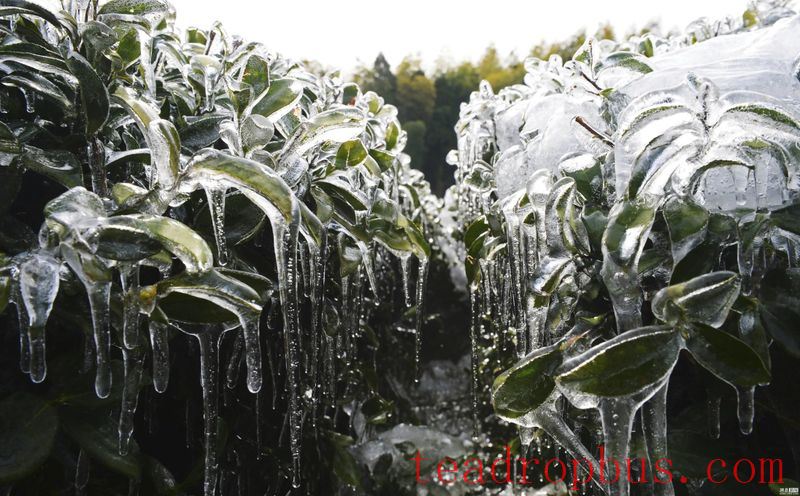
2. Dry Frost
During intense cold waves, when temperatures drop sharply and are accompanied by dry, cold winds, the moisture in the tea plant evaporates rapidly, disrupting the water balance and causing physiological drought. Leaves often appear wilted and subsequently fall off; in severe cases, branches may dry out and crack.
3. Snow Frost
For tea plants with long shoots or those of arboreal varieties, heavy snow can lead to broken branches. During the melting process, if temperatures drop again, the tree and soil can freeze. When temperatures suddenly rise and the snow melts quickly, the physiological functions of the tea plant become more active, but the water in the cell gaps evaporates rapidly, causing dehydration of the protoplasm. Repeated freezing and thawing can cause greater frost damage, mostly occurring at the upper canopy and often more severe on the sunny side.

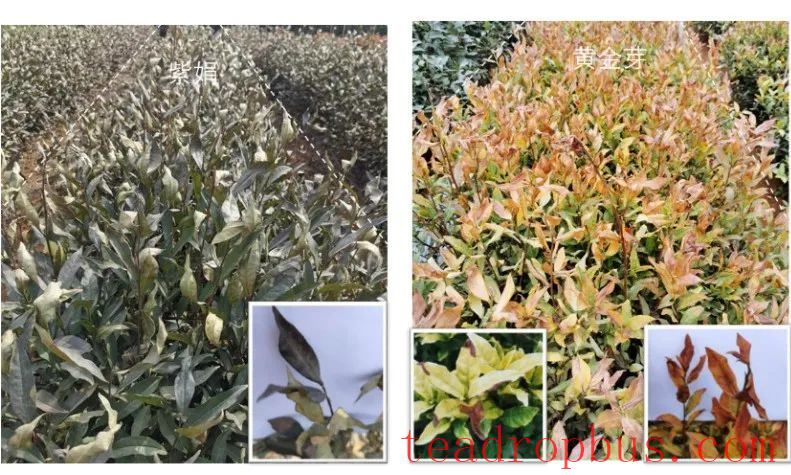
Leaf Dehydration in Tea Plants After Frost
4. Hoarfrost
Hoarfrost occurs when cold air causes the ground and tea plants to lose heat through radiation, causing ground temperatures to plummet below 0°C. Late hoarfrosts in March and April can be particularly damaging. If young shoots encounter late hoarfrost, they may become scorched or even wither, significantly affecting the quality and yield of high-quality teas.
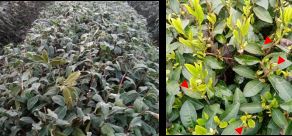


Emergency Protection Techniques for Tea Gardens During Cold and Snowy Weather
1. Mature Tea Gardens
(1) Covering Protection. For mature tea gardens, non-woven fabrics, woven bags, plastic films, or shade nets can be used to directly cover the tea bushes. A better effect can be achieved by using a frame to support the covers above the canopy, about 10-20 cm above the plants. Materials like straw, crop stalks, and pine branches can also be used, providing good protection against extreme low temperatures.
(2) Drainage Protection. For mature tea gardens experiencing rain and snow during cold snaps, it is important to drain any accumulated water to prevent soil and roots from freezing. If the temperature rises after a cold wave, the increased soil moisture content due to rain or snow can help raise the ground temperature and mitigate frost damage to some extent. However, if the temperature drop is too severe and prolonged, rain and snow can exacerbate the frost damage.
(3) Windbreak Protection. To protect against strong winds brought by low temperatures, windbreaks can be erected on the northern and western sides of the garden. The best material for windbreaks is straw curtains, although plastic film can also be used, ensuring that “the front allows light through while the back protects, without shading the rows behind.”
(4) Application of Anti-Freeze Agents. For mature tea plants, anti-freeze agents can be sprayed on the leaves before the arrival of extreme low temperatures to enhance their tolerance to such conditions.
(5) Water Spraying. In tea gardens equipped with sprinkler systems, when the temperature drops to around 0°C, water can be sprayed onto the tea plants to effectively control frost damage.

(6) Blowing Wind. For large-scale tea gardens, anti-frost machines can be installed. When hoarfrost occurs, turning on these machines to blow wind can disturb the inversion layer near the ground, forcing warm air above the tea bushes, effectively raising the surface temperature and avoiding or reducing frost damage.
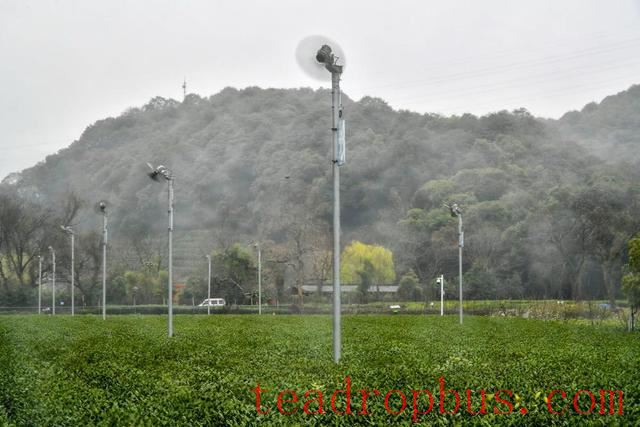
2. Young Tea Gardens
For young tea gardens, soil mound protection or straw mulching can be used. Soil mound protection involves covering the tea seedlings with semi-dry soil up to one-third to one-half of their height, while straw mulching involves covering the space between rows with straw to reduce the impact of extreme low temperatures on the root system. Suitable materials for mulching include straw, wheat stalks, corn stalks, and green manure stalks.
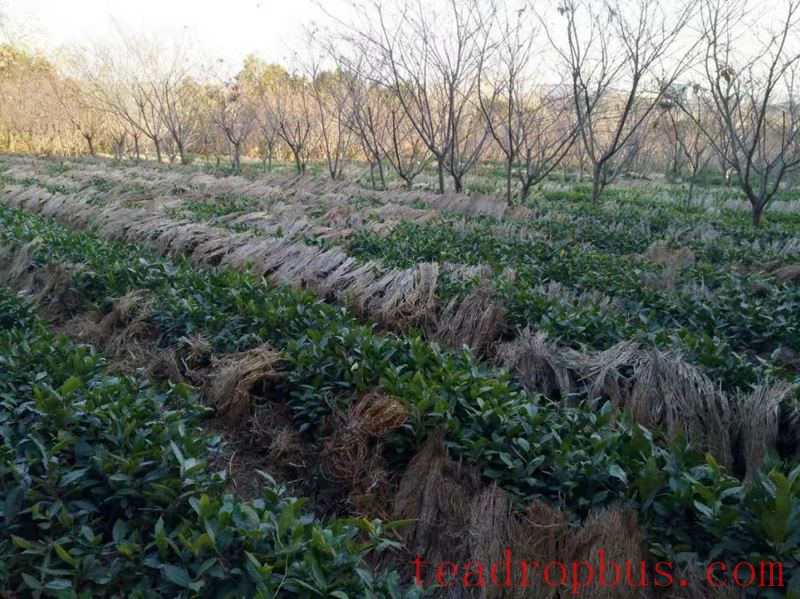
In addition, in northern tea gardens where temperatures are lower, various structures covered with plastic film can be used for overwintering. Single or double rows can be covered with high-quality agricultural film, with bamboo arches spaced about 1 meter apart, and the minimum distance between the tea bush canopy and the film should be greater than 10 cm. If snow accompanies low temperatures, accumulated snow on the facilities should be removed promptly to prevent collapse.